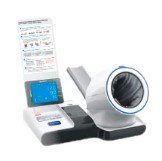The Role of Software Updates in Maintaining Quality Control of Medical Lab Equipment
Summary
- Software updates play a crucial role in maintaining the Quality Control of medical lab equipment in the United States.
- Regular updates ensure that the equipment operates efficiently and accurately, providing reliable results for patient diagnosis and treatment.
- Proper implementation of software updates requires coordination between lab staff, IT personnel, and equipment manufacturers to ensure seamless integration.
The Importance of Quality Control in Medical Labs
Medical labs play a vital role in the healthcare industry by providing essential diagnostic services to patients. The accuracy and reliability of lab Test Results are critical for making informed decisions about patient care. Quality Control measures are implemented to ensure that lab equipment functions properly and produces accurate results. One of the key components of Quality Control in medical labs is the implementation of software updates for lab equipment.
What are Software Updates?
Software updates are patches or enhancements released by equipment manufacturers to improve the functionality, performance, and security of lab equipment. These updates can address issues such as bugs, glitches, and vulnerabilities that may affect the accuracy of Test Results. By regularly updating the software of lab equipment, healthcare facilities can ensure that their technology remains up-to-date and compliant with industry standards.
The Impact of Software Updates on Quality Control
The implementation of software updates is essential for maintaining the Quality Control of medical lab equipment in the United States. Here are some ways in which software updates can impact Quality Control:
- Enhanced Performance: Software updates can improve the performance of lab equipment by fixing bugs, optimizing processes, and enhancing features. This can lead to more accurate and reliable Test Results.
- Compliance with Regulations: Regulatory bodies such as the Food and Drug Administration (FDA) require healthcare facilities to maintain their equipment in compliance with industry standards. Regular software updates help ensure that lab equipment meets these Regulations.
- Increased Security: Cybersecurity threats pose a risk to the integrity of lab data and patient information. Software updates often include security patches that help protect lab equipment from cyber attacks and breaches.
Challenges in Implementing Software Updates
While software updates are crucial for maintaining the Quality Control of medical lab equipment, there are challenges associated with their implementation:
Coordination Between Departments
Implementing software updates requires coordination between various departments within a healthcare facility. Lab staff, IT personnel, and equipment manufacturers must work together to ensure that updates are installed correctly and do not disrupt lab operations.
Downtime and Disruption
Software updates may require lab equipment to be temporarily taken offline for installation. This downtime can disrupt lab workflows and delay Test Results, impacting patient care. Healthcare facilities must plan for these disruptions and schedule updates during off-peak hours whenever possible.
Testing and Validation
Before implementing software updates, lab staff must test and validate the updates to ensure that they do not introduce new issues or affect the accuracy of Test Results. This process can be time-consuming and may require additional resources to complete effectively.
Best Practices for Implementing Software Updates
To overcome the challenges associated with implementing software updates for medical lab equipment, healthcare facilities can follow these best practices:
Develop a Standard Operating Procedure
Create a standard operating procedure (SOP) for installing and testing software updates on lab equipment. This SOP should outline the responsibilities of each department involved in the process and provide step-by-step instructions for updating equipment.
Train Staff Effectively
Ensure that lab staff and IT personnel receive proper training on how to install and test software updates. Training can help prevent errors during the update process and ensure that updates are implemented correctly.
Communicate Proactively
Regular communication between departments is key to successfully implementing software updates. Keep all stakeholders informed of update schedules, potential disruptions, and any issues that may arise during the process.
Monitor Performance
After installing software updates, monitor the performance of lab equipment to ensure that the updates have been successful. Test the equipment regularly to verify that Test Results remain accurate and reliable.
Conclusion
The implementation of software updates is essential for maintaining the Quality Control of medical lab equipment in the United States. By regularly updating the software of lab equipment, healthcare facilities can ensure that their technology operates efficiently and produces accurate results for patient diagnosis and treatment. Proper coordination between lab staff, IT personnel, and equipment manufacturers is crucial for the successful implementation of software updates. By following best practices and overcoming challenges, healthcare facilities can ensure that their lab equipment remains up-to-date and compliant with industry standards.

Disclaimer: The content provided on this blog is for informational purposes only, reflecting the personal opinions and insights of the author(s) on the topics. The information provided should not be used for diagnosing or treating a health problem or disease, and those seeking personal medical advice should consult with a licensed physician. Always seek the advice of your doctor or other qualified health provider regarding a medical condition. Never disregard professional medical advice or delay in seeking it because of something you have read on this website. If you think you may have a medical emergency, call 911 or go to the nearest emergency room immediately. No physician-patient relationship is created by this web site or its use. No contributors to this web site make any representations, express or implied, with respect to the information provided herein or to its use. While we strive to share accurate and up-to-date information, we cannot guarantee the completeness, reliability, or accuracy of the content. The blog may also include links to external websites and resources for the convenience of our readers. Please note that linking to other sites does not imply endorsement of their content, practices, or services by us. Readers should use their discretion and judgment while exploring any external links and resources mentioned on this blog.
